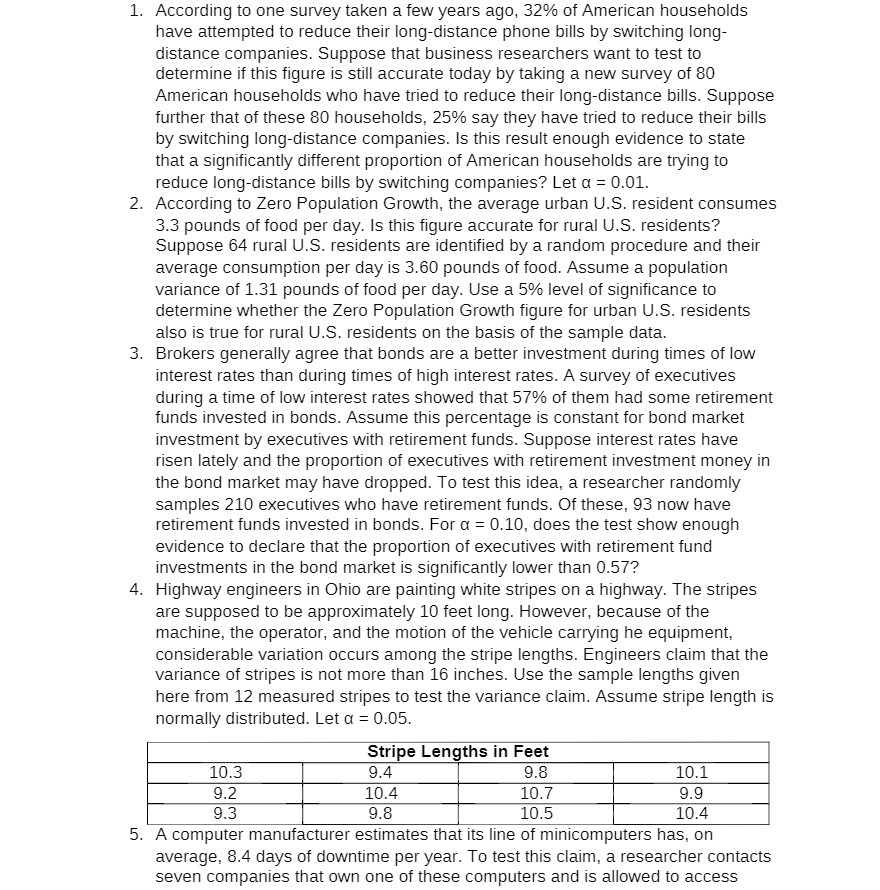1. According to one survey taken afew years ago, 32% of American households have attempted to reduce their longdistance phone bills by switching long distance companies. Suppose that business researchers want to test to determine if this figure is still accurate today by taking a new survey of 80 American households who have tried to reduce their longdistance bills. Suppose further that of these 80 households, 25% say they have tried to reduce their bills by switching longdistance companies. Is this result enough evidence to state that a significantly different proportion of American households are trying to reduce longdistance bills by switching companies? Let a = 0.01. 2. According to Zero Population Growth, the average urban U.S. resident consumes 3.3 pounds of food per day. Is this gure accurate for rural U.S. residents? Suppose 64 rural U.S. residents are identied by a random procedure and their average consumption per day is 3.60 pounds of food. Assume a population variance of 1.31 pounds of food per day. Use a 5% level of signicance to determine whether the Zero Population Growth figure for urban U.S. residents also is true for rural U.S. residents on the basis of the sample data. 3. Brokers generally agree that bonds are a better investment during times of low interest rates than during times of high interest rates. A survey of executives during a time of low interest rates showed that 57% of them had some retirement funds invested in bonds. Assume this percentage is constant for bond market investment by executives with retirement funds. Suppose interest rates have risen lately and the proportion of executives with retirement investment money in the bond market may have dropped. To test this idea, a researcher randomly samples 210 executives who have retirement funds. Of these, 93 now have retirement funds invested in bonds. For a = 0.10, does the test show enough evidence to declare that the proportion of executives with retirement fund investments in the bond market is significantly lower than 0.57? 4. Highway engineers in Ohio are painting white stripes on a highway. The stripes are supposed to be approximately 10 feet long. However, because of the machine, the operator, and the motion of the vehicle carrying he equipment, considerable variaon occurs among the stripe lengths. Engineers claim that the van'ance of stripes is not more than 16 inches. Use the sample lengths given here from 12 measured stripes to test the van'ance claim. Assume stripe length is normally distributed. Let {I = 0.05. Stripe Lengths in Feet Ma n_ 'a- 5. A computer manufacturer estimates that its line of minicomputers has, on average, 8.4 days of downtime per year. To test this claim, a researcher contacts seven companies that own one of these computers and is allowed to access







